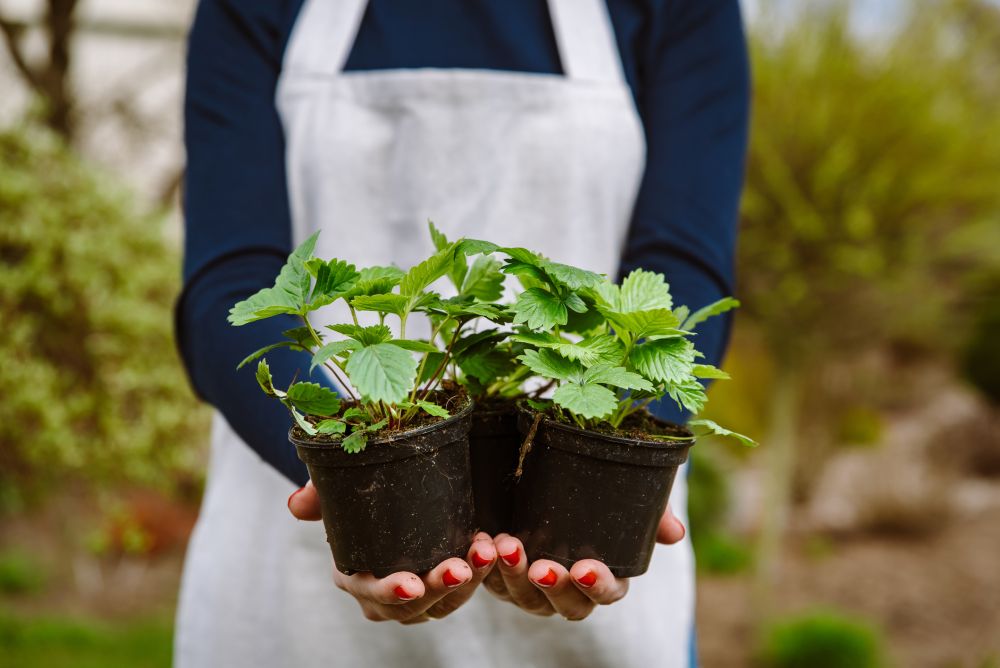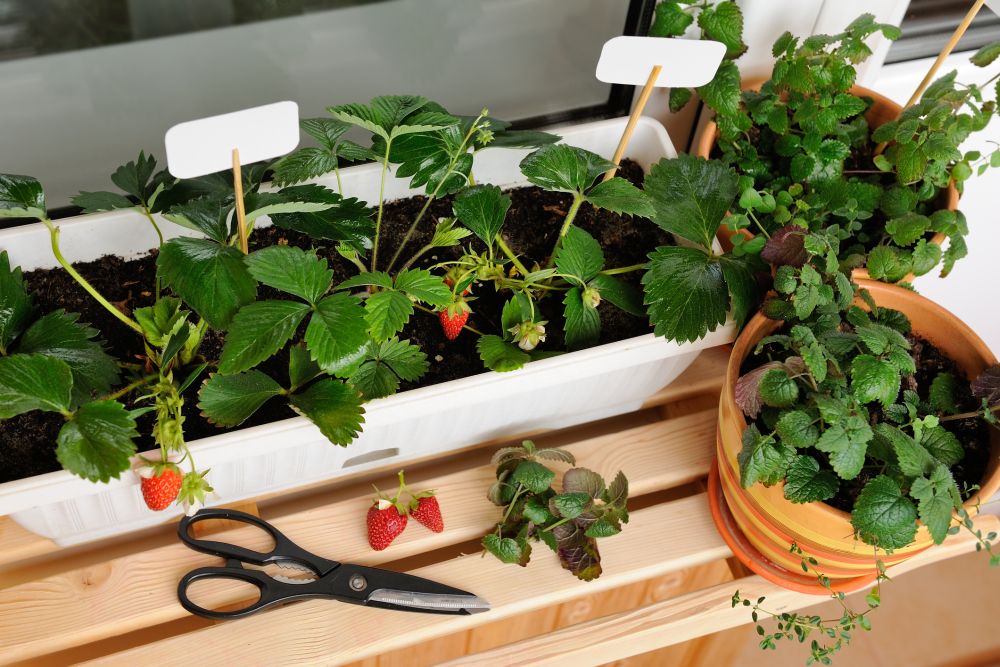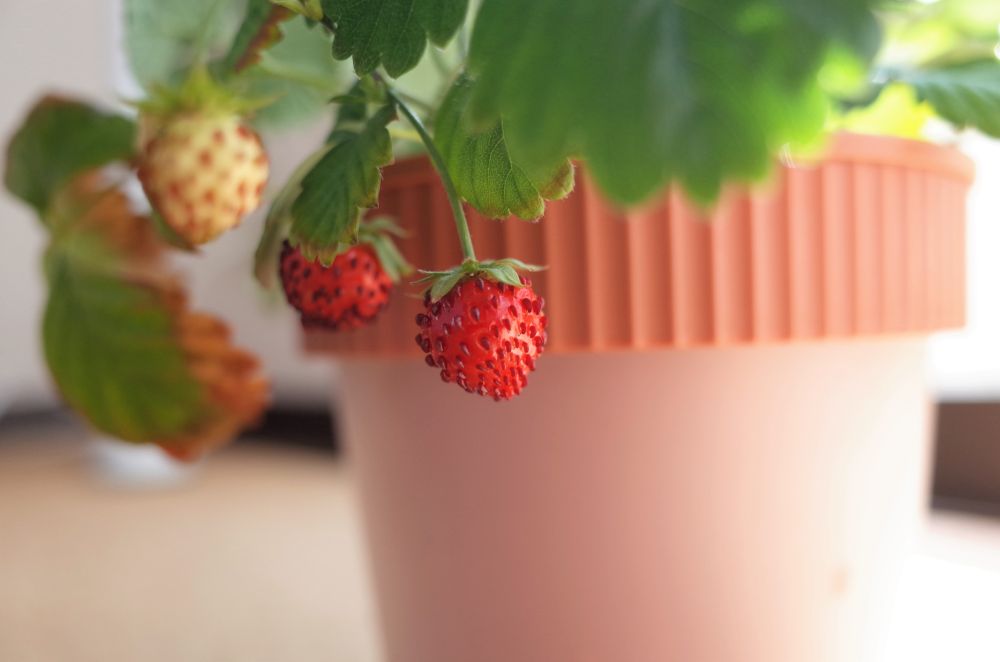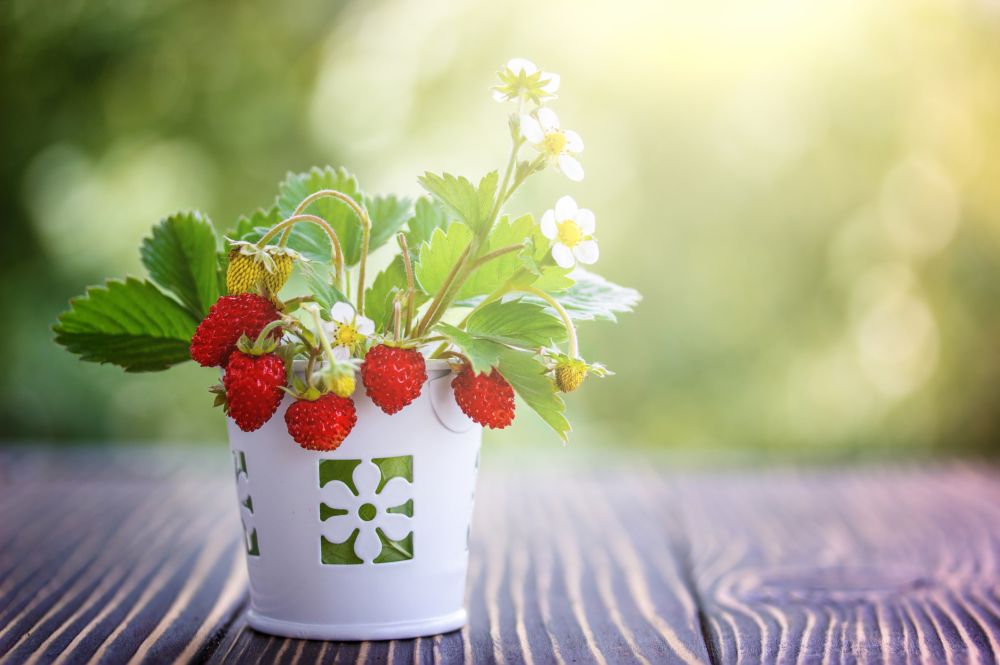Berry Container Gardening – Growing And Caring For Berries In Pots
Berry container gardening is part of the trend that’s revolutionizing the world of gardening. The idea is, if you don’t have gardening space, that doesn’t you can’t enjoy your favorite hobby of growing your own food. If you have a balcony or a window that gets plenty of sun during the spring and summer, that’s probably all you need to go back to gardening again. You can eat your berries raw, put them in smoothies, dessert, or bake them.
That’s good with veggies, you say, but what about berry container gardening? The beauty of berries of different types is that they’re quite adaptable. In the right container and soil, they’ll grow just as vigorously as in the garden. So what types of berries can you grow in pots? And how do you care for them and ensure they don’t struggle during the winter months? Read on to find the answers to these questions and more.
Best Berries for Berry Container Gardening
Berries grow well both in containers and in the garden. The only difference is the space available for the plant and the amount of soil its roots have to grow. And while you can grow many berries, you should always look for compact varieties for your berry container gardening. Here are the best 6 berries to grow in pots.
Strawberries
You can grow strawberries either in strawberry tiered pots or hanging baskets. The plants tend to cascade over the sides of the pot, so the higher you keep them, the better. As long as the soil is warm, the strawberries are happy. Also, the extra height keeps the strawberries safe from mold and pests.
Known for their limited space requirements, many strawberry varieties are suitable for growing in pots. In general, there are two types of strawberries. The first is the June-bearing type. These strawberries all ripen at once in the early summer and should be harvested together. The other type is the ever-bearing strawberry where the fruits take all summer to ripen. Every few days you’ll find few ripe berries to pick. Some notable varieties include Everbearing Ozark Beauty, White Carolina Pineberry, and Hirts Evie Everbearing.
Blueberries
It’s a different story when it comes to blueberries. These berries usually require more space than the compact strawberries. So the key to growing blueberries in containers is to pick the varieties that don’t grow above three feet. Some hybrids and cultivars to consider include Peach Sorbet, Biloxi, Pink Icing, Pink Lemonade, Jelly Bean, and Blueberry Glaze.
Pollination is one of the main concerns when growing potted blueberries. Most varieties require two or more blueberry species to cross-pollinate. But these cultivars are self-pollinating and you don’t need to grow more than one plant or one cultivar. Another advantage to growing blueberries is that they stay productive for years long after other berries have died.
Acai Berries
Acai berries have been associated with weight loss and dieticians swear up and down by their benefits. Maybe that’s why these berries are so expensive. So if you want to grow a berry at home, why not try acai berries? It will save you a fortune, not to mention that you’ll have them fresh off the palm. They usually grow in zones 9 to 11 which means lots of sun and warm weather.
Only the dwarf cultivars are suitable for indoor growing. The palms grow to about 30 feet high in the garden, but the dwarf acai can be tamed to about 12 feet high when grown in containers. Patience is another requirement for growing these palms. It takes the acai about 3 years to start producing the first berries.
Raspberries
Unlike acai palms, raspberries are more suitable for cold and moderate zones from 2 to 8. The plants have robust crowns and are heavy feeders so you’ll need a 5-gallon container to accommodate them. The main issue you’ll have with raspberries is they tend to get weedy. So they’re more suitable for containers where you can manage their size and spread with regular pruning.
Besides pruning, you’ll also need to feed the plants on a weekly basis. You could use organic fertilizer or compost tea which is both mild and natural. Some recommended raspberry varieties include Anne Gold Everbearing, Nantahala, and Shortcake Red.
Gooseberries
You can grow gooseberries in zones 3 to 8 since they don’t like too much sun exposure. Morning sun is ideal for getting the berries ripe without ruining the flavor. But whatever you do, protect gooseberries against the afternoon sun.
These berries need plenty of fertilizing but with more focus on phosphorus which encourages flowering. And to get large berries, you’ll need to thin out the yield halfway through. Those unripe berries can be used in pies and desserts. Some varieties to consider include Amish Red, Outside Pride, and Pixwell among others.
Blackberries
The hardy blackberries can handle all kinds of weather. That’s why you can easily grow them in zones 3 to 10 without problems. The berries need a 5-gallon container to accommodate their root systems and provide enough nutrients in the soil. The plants need support as the leaves and berries are too heavy for the stems. So you’ll need to place a stake in the pot once the first leaves start to emerge. And to improve the flavor of the blackberries, consider feeding them with kelp meal.
Some notable blackberries to grow include Sweetie Pie, Black Satin, and Apache. The last two of these varieties are thornless.
Berry Container Gardening Care
While berries vary in their care needs and requirements, they all share their love for sunlight. The warm rays of the sun are what get the berries ripe. But as we have seen, some berries like gooseberries prefer only the morning sun, while others can’t get enough of it. So with that in mind, here are the main care factors to consider for berry container gardening.
Container Size
One of the first things to consider once you’ve picked the right berry to grow is the size of the container. If you plant the berry in a small pot, the roots will become crowded, the nutrition in the soil depleted, and the plant will produce fewer berries than normal. Another problem with using small pots is the constant need to feed and water the plant.
On average you can start with a 5-gallon pot for most berries. Acai palms might need to be repotted regularly considering that they grow to about 12 feet. As for strawberries, they prefer a wide container rather than a deep one. That way you can grow more than one strawberry in the same pot. And all of these containers should have drainage holes at the bottom.
Soil
That’s something you have more control over when growing berries in containers than if you were to plant them in the garden. With a container, you have many soil options and even make your own potting mix. Almost all berries need rich soil. So the more organic materials you put in the soil, the happier the berries will be. A good rule of thumb is to mix regular soil or general-purpose potting mix with organic compost in equal portions. The compost while providing the necessary nutrients for the berries also improves the drainage and aeration of the soil. It also reduces the need to feed the plants regularly.
Light
The light needs of the berries vary widely. But they all share the need to get a few hours of sun every day during the growing, flowering, and fruiting cycles. How much sunlight your berry needs depends on the species you’re growing. Gooseberries usually will do with just a couple of hours of the morning sun. Any more than that would damage the berries. So place the container on a window sill facing the east or north.
Most other berries need between 6 to 8 hours of sunlight on average. That means you should place the pot on a window facing the north in the morning then moving it to another window facing the south. Light deprivation impacts the flowering and yield of the berries.
Water
Plants growing in pots usually need more watering than those growing in the garden. That’s because the limited soil mass in the pot loses moisture rather quickly. This applies to berries in pots as well. They prefer the soil to be moist but not wet and have a low tolerance for dry soil. Another factor that affects your watering patterns is the type of pot you’re using. Plastic pots tend to retain water for longer than porous terra-cotta containers. During the growing seasons, you might have to water the soil every day. Keep your watering light and always water the berries in the morning before the sun bears down on them.
Pruning
If you’re growing a dwarf variety of a berry, then pruning will become a regular task. Acai palms for example will grow to up to 30 feet if left to their own devices. But with pruning, you can keep their size compact and within 10 to 12 feet.
Blackberries and raspberries also need plenty of pruning to keep their fast-growing stems from spreading all over the place. Usually, you’d cut back these berries after harvest time. Remove any dead or damaged stems and trim away about one-third of the plant to encourage new growth in the spring. Avoid fertilizing the plant after pruning since that could trigger a spurt of growth in the winter and the new shoots won’t survive the cold temperatures.
Winterizing Potted Berries
Most berries, even the hardy ones that can tolerate cold zones, need to be winterized. In zones where the temperature drops in the winter or there’s a risk of frost, you need to take precautions to help the berries survive the cold months.
There are many ways you can winterize your berries. The easiest is to wrap a chicken wire around the pots and fill the space between the pot and the wire with dead leaves, pine needles, sawdust, and straw. This is called insulating the plants and it keeps the roots from freezing.
Another method is to keep the pots in a cold room such as a shed or the garage. This might be an effective winterizing method if you have frigid winters and the temperatures reach freezing points at night.
Some people place the potted berries in piles of compost. You’ll need to sink the container all the way to the rim. It works well in moderate to warm zones where there’s no risk of frost or snowfall.



